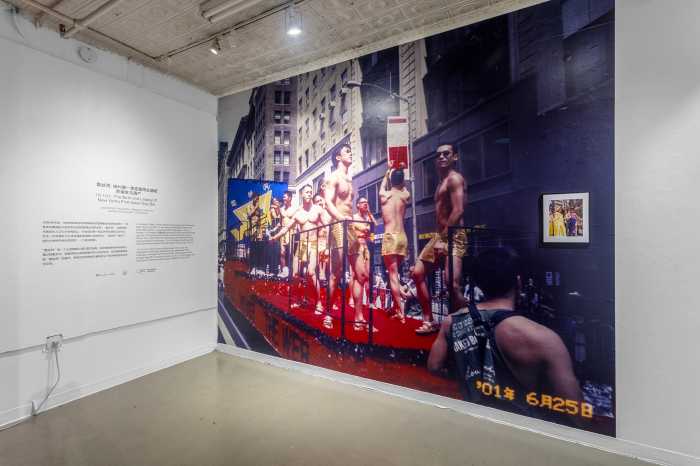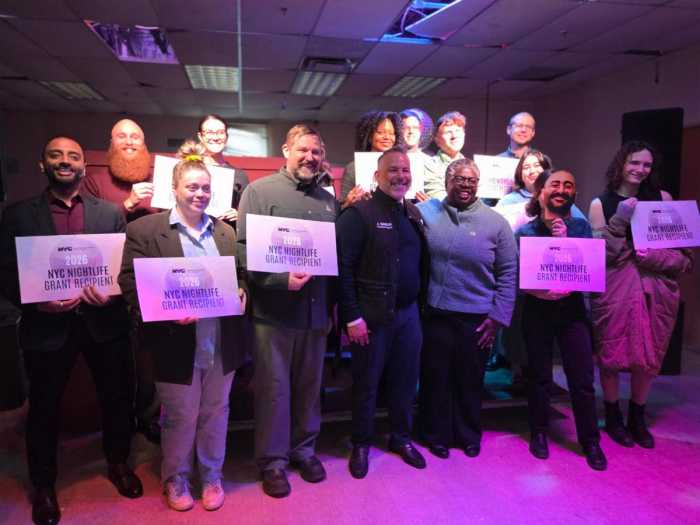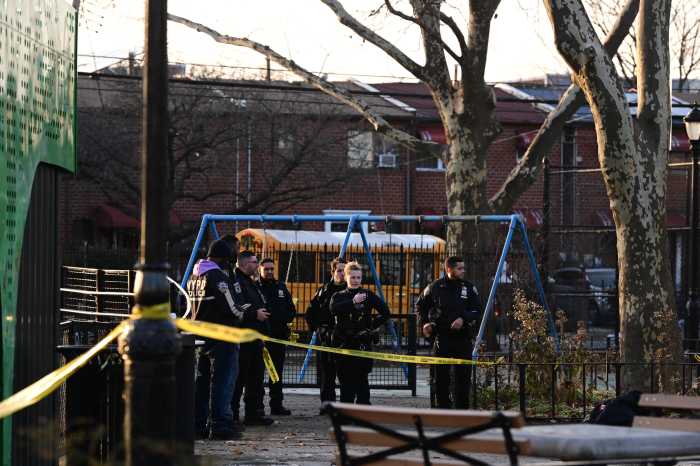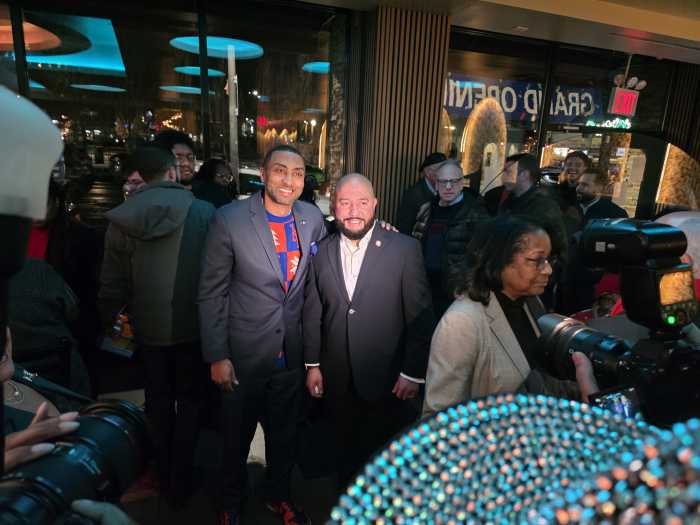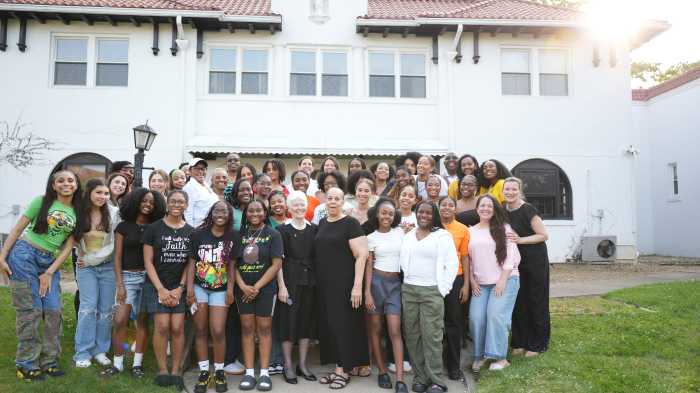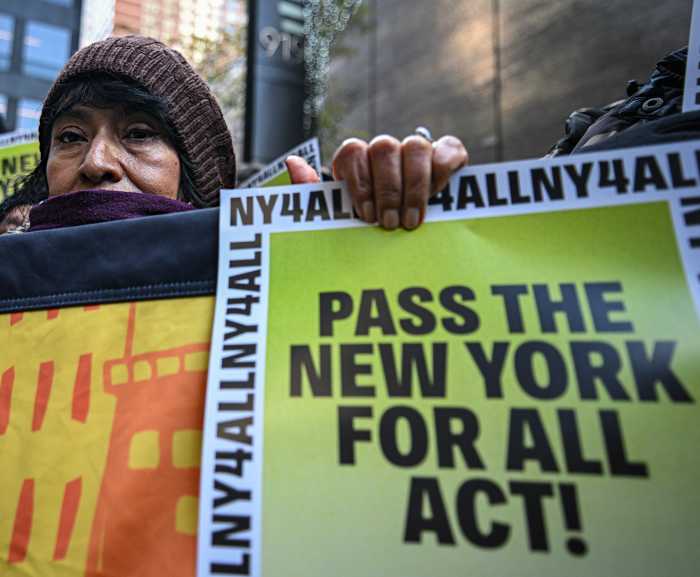BY DAVID NOH / “I been wonderin’ why you been sniffin’ round the plantation ever since Miss Mi-riam arrived!” was Agnes Moorehead’s immortally snarled line as that cherishable harridan Velma Carruthers in “Hush, Hush Sweet Charlotte,” and I, too, have been sniffing through 2011’s cultural events to come up again with my annual Aggies, named for the ultimate character actress.
BROADWAY
“Good People,” “Chinglish,” “Blood and Gifts,” “The Normal Heart” were the only four good serious plays on Broadway the entire season. The first was, hands down, the best play of the year; the second was David Henry Hwang’s best, funniest work since “M. Butterfly”; the third, J.T. Rogers’ sweepingly incisive play about the Afghan conflict, brilliantly directed by Bartlett Sher; and the last, George C. Wolfe and Joel Grey’s genius re-imagining of Larry Kramer’s diatribe, sparked by ovation-earning Ellen Barkin, who, with this and the film “Another Happy Day,” staged one of the most impressive dramatic comebacks in memory.
OFF-BROADWAY, OFF-OFF:
“By the Way, Meet Vera Stark” was Lynn Nottage’s deliriously entertaining fantasia on the life of exquisite black Hollywood actress Theresa Harris, consigned to playing maids, despite her beauty and talent.
Kirsten Greenidge’s blistering, eye-opening study of desperately would-be baby mamas, “Milk Like Sugar,” was illumined by the take-no-prisoners greatness of Tonya Pinkins.
“Little Journey” was Mint Theater’s delightful, splendidly cast, impressively elaborate revival of Rachel Crothers’ 1918 Pulitzer nominee.
“Green Eyes.” director Travis Chamberlian’s intimately site-specific hotel staging of a Tennessee Williams rarity was properly raffish and featured fearless performances by downtown diva Erin Markley and the dazzling — in every way — Adam Couperthwaite.
Moving from its West Side Y location to New World Stages, “Freud’s Last Session,” Mark St. Germain’s deservedly long-running work, still offers more fecund food for thought than any ten plays currently running.
“Paper Cut,” Yael Rasooly’s fiendishly clever and funny tribute to spinsters and old movies, was the unquestioned highlight of the New York Fringe Festival.
“Silence! the Musical” was a show that should have never worked, but, goddammit, does it ever, delivering more laughs than any show this season, as well as the most unforgettable song, “If I could Smell Her, etc.”
CONCERT/ CABARET
“Stephen Sondheim’s Company,” the New York Philharmonic’s revival deftly helmed by Lonny Price, was the best version I’ve ever seen, and — move over Stritch — LuPone now also owns “Ladies who Lunch.”
Jean Brassard’s evocation of the great Yves Montand, “The Kid from Paris,” was enchantingly resonant.
“Lonette McKee: Can’t Help Lovin” was joyously unpredictable and downright thrilling, with this diva gorgeously singing everything from Jerome Kern to Curtis Mayfield.
“Melissa Erricoe at Joe’s Pub,” paying loving tribute to Michel Legrand, showed that her voice and presence are lovelier than ever, especially on a sumptuous “His Eyes, Her Eyes,” from the famous “Thomas Crown Affair” chess scene, with lyrics by Alan and Marilyn Bergman, which Erricoe debuted.
“Lady Bunny: That Ain’t No Lady!” was sick, wrong and everything we adore about her. The Bunster definitely never needed the Times finally to tell her — or us — how truly divine, not to mention hardworking, she is.
“Sophie Tucker in Person” was Cheryl Ann Allen’s informative, beautifully sung and acted impersonation of that raunchily stentorian, finger-waving behemoth.
Finally, week after week, Stacie Perlman, a sensationally versatile contestant in Metropolitan Room’s “MetroStar Talent Challenge” left our jaws dropping with her selections, a natural born “Funny Girl” if ever there was.
FILM
This was quite a good year, film-wise, but many 10-best lists are driving me crazy, so swift are critics to fall for boring windy pretentiousness, like the unfathomably silly “Tree of Life”; “Melancholia” (the soundtrack choice of Wagner’s “Liebestod,” so over-used in film through the years as to be a joke in itself, says everything); “A Dangerous Method,” which cornily played like one of those pompous Warner biopics of the 1930s with Paul Muni; “J. Edgar” (are they serious? With that risible old-age makeup? And people did not say “fashion forward” or “photo op” in the 1930s!); “Meek’s Cutoff,” the very kind of arid, dull thing they always fall for, which makes me think most critics are metaphysically dog collar-wearing masochists; or “The Artist,” so derivative and just okay — if you’ve never seen a silent film in your entire life.
As for “Bridesmaids” being the year’s funniest, well fine, if, apart from a promising opening, you like utterly demeaning grossness and Melissa McCarthy, grotesque as a sorta dyke who turns out to be straight and about as deserving of a Best Supporting Oscar as John Mills and Helen Hayes were in 1970 (for, gag me, “Ryan’s Daughter” and “Airport”).
My disenchantment has driven me to create my own top 10, which I am dubbing the Edmund Goulding Awards (aka the “Eddies”) in honor of that gay (though same say bi) director who was perennially underrated if not downright ignored, although he made more classic entertaining films than most: “Grand Hotel,” the Oscar-winning 1932 film, for which he wasn’t even nominated; “Dark Victory” and “The Old Maid,” two of Bette Davis’ rare delicate performances, and among her best; the super-intelligent “The Flame Within”; the F. Scott Fitzgerald-like “Riptide”; echt-Maughamesque “The Razor’s Edge”; his dark masterpiece, a pinnacle of film noir, “Nightmare Alley”; and my personal favorite, the endlessly diverting “Blondie of the Follies.” Renaissance man Goulding also wrote many of these, as well as songs like “Love, Your Magic Spell is Everywhere” (for Gloria Swanson’s “The Trespasser”) and “Mam’selle” (for “The Razor’s Edge”), and even did Garbo’s hair for “Love.”
So, the Eddies for 2011 films, many of which were completely overlooked, and, like the Aggies, in no particular order: “Mozart’s Sister,” Weekend,” “Pariah,” “Gainsbourg,” “The Rum Diary” and “Horrible Bosses” (the two funniest films of the year), “Another Happy Day,” “My Week with Marilyn,” “One Lucky Elephant” (the greatest love story of the year), and “The Descendants,” for its depiction, for the first time in commercial cinema, of a Hawaii that actually exists.
Say what you like, none of them are fuckin’ bores!
Escape to a ravishing fantasy world in the new year by visiting “Hats: An Anthology by Stephen Jones,” at the Bard Graduate Center (18 W. 86th Str., through Apr. 16; bgc.bard.edu/gallery). Curated by Jones, the acknowledged present-day master of millinery, it’s an enchanting compendium of headgear, ranging from the designer’s own breathtakingly creative work to historic pieces, which include Marlene Dietrich’s beret, Empress Eugenie’s toque, Maurice Chevalier’s straw boater, Babe Ruth’s baseball cap, Darth Vader’s helmet, FDR’s top hat, and the Halston bunny ears Candice Bergen wore to Truman Capote’s Black and White Ball.
The lovely, humble Jones was born in Cheshire, England, grew up in Liverpool, and blossomed in the 1970s London of unparalleled, now-legendary street chic. Always in demand, he has worked with every major designer since that time, and takes his rightful place alongside the greatest milliners in history — Marie Antoinette’s Rose Bertin, Suzy, Paulette, Lily Daché, Sally Victor, Mr. John, and Halston.
Jones’ accomplishments are all the more striking when you consider the fact he was born with a deformity of the hand, which did nothing to impede him, as witness the minutely detailed attention ever-present in his work. The exhibit has a fantastic recreation of his studio which silently buzzes with the creative excitement which must daily occur there, from the pinned up inspiration boards, tumbling ribbons, flowers and plumes, and ever-present cuppa.
Some of Jones’ most extravagant creations were made for designer John Galliano — who never did a show without him from 1993 — like the orange and pink feather and tulle creation, inspired by an Edward Steichen photo for a 2009 defilé, which took three days to make.
Galliano was very much on my mind when I saw “Cecil Beaton: the New York Years” at The Museum of the City of New York (1220 Fifth Ave. at 103rd St., through Feb. 20; mcny.org). Beaton has been an obsession of mine since a childhood viewing of “My Fair Lady,” his peacock talents as artist, designer, photographer, and writer being everything I aspired to, but, with new posthumous revelations in his own unexpurgated diaries and biographies, he is definitely a case of being careful what you wish for…
Galliano’s disgrace in the wake of his anti-Semitic behavior last year had its forebear in a 1938 incident involving Beaton and some denigrating remarks he incorporated into a Vogue magazine drawing that actually found their way to print. “Mr R Andrews ball at the El Morocco brought out all the damned kikes in town” was one of them, microscopically rendered in a margin, and Walter Winchell — the precursor to Gawker —wrote of them in his column.
Beaton was fired by Vogue publisher Condé Nast, and hopes of a Hollywood designing career were also effectively dashed by his nasty references to the wives of Goldwyn and Selznick. His American career was over until his “My Fair Lady” triumph in 1956, and he eventually reappeared on Vogue pages. One wonders how long Galliano’s public rehabilitation — if any — will take, fashion famously not having the most strictly retentive of minds. Beaton’s offending drawing is in the museum show, as is the telegram sent to Beaton by Condé Nast on the day Winchell’s column broke: “I am so terribly distressed over this horrible mess — Forgive me for asking you to run away from the opera [to see me].”
Happier evidence of Beaton’s legacy is also on view in this handsomely mounted exhibit, which includes photos, drawings, books, and costumes, all reflecting his feverish creativity. There are shrines to his goddesses, Garbo and Monroe, neither of which ever looked more glorious than when under his direction.
What I most admired were his delicate watercolor portraits of Wallis Windsor, Mrs. Harrison Williams, Lillian Gish, and Katharine Hepburn. There’s a weighty accompanying book to the exhibit by Donald Albrecht (Rizzoli) which, while it will be rewarding to Beaton neophytes, rather repeats too many of his most famous images for an old fanatic like me.
Contact David Noh at Inthenoh@aol.com and check out his new blog at http://nohway.wordpress.com/.
Aggie winner Jean Brassard’s evocation of the great Yves Montand, “The Kid from Paris,” was enchantingly resonant.

